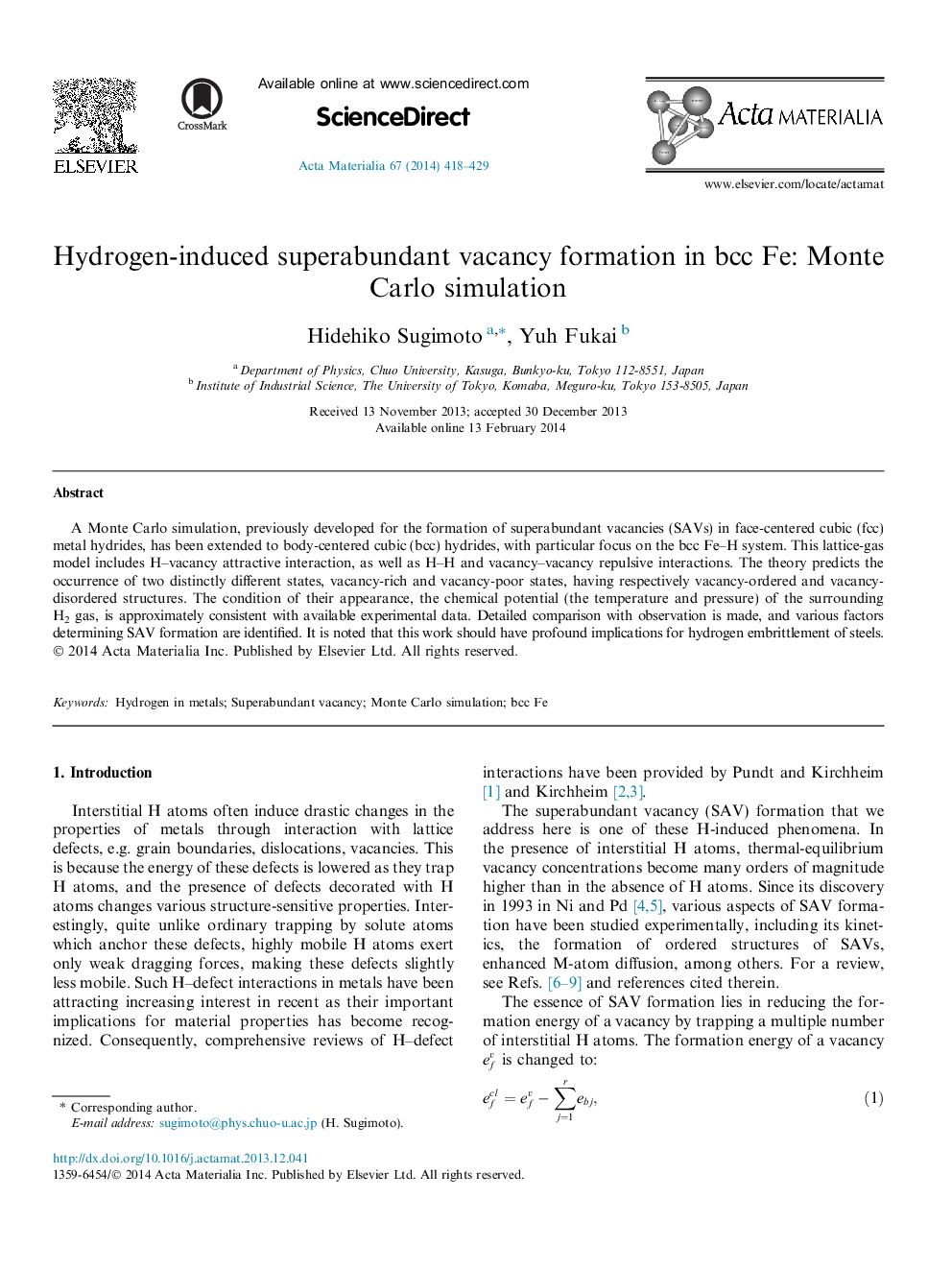| Article ID | Journal | Published Year | Pages | File Type |
|---|---|---|---|---|
| 7882658 | Acta Materialia | 2014 | 12 Pages |
Abstract
A Monte Carlo simulation, previously developed for the formation of superabundant vacancies (SAVs) in face-centered cubic (fcc) metal hydrides, has been extended to body-centered cubic (bcc) hydrides, with particular focus on the bcc Fe-H system. This lattice-gas model includes H-vacancy attractive interaction, as well as H-H and vacancy-vacancy repulsive interactions. The theory predicts the occurrence of two distinctly different states, vacancy-rich and vacancy-poor states, having respectively vacancy-ordered and vacancy-disordered structures. The condition of their appearance, the chemical potential (the temperature and pressure) of the surrounding H2 gas, is approximately consistent with available experimental data. Detailed comparison with observation is made, and various factors determining SAV formation are identified. It is noted that this work should have profound implications for hydrogen embrittlement of steels.
Related Topics
Physical Sciences and Engineering
Materials Science
Ceramics and Composites
Authors
Hidehiko Sugimoto, Yuh Fukai,
